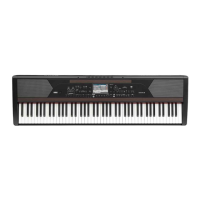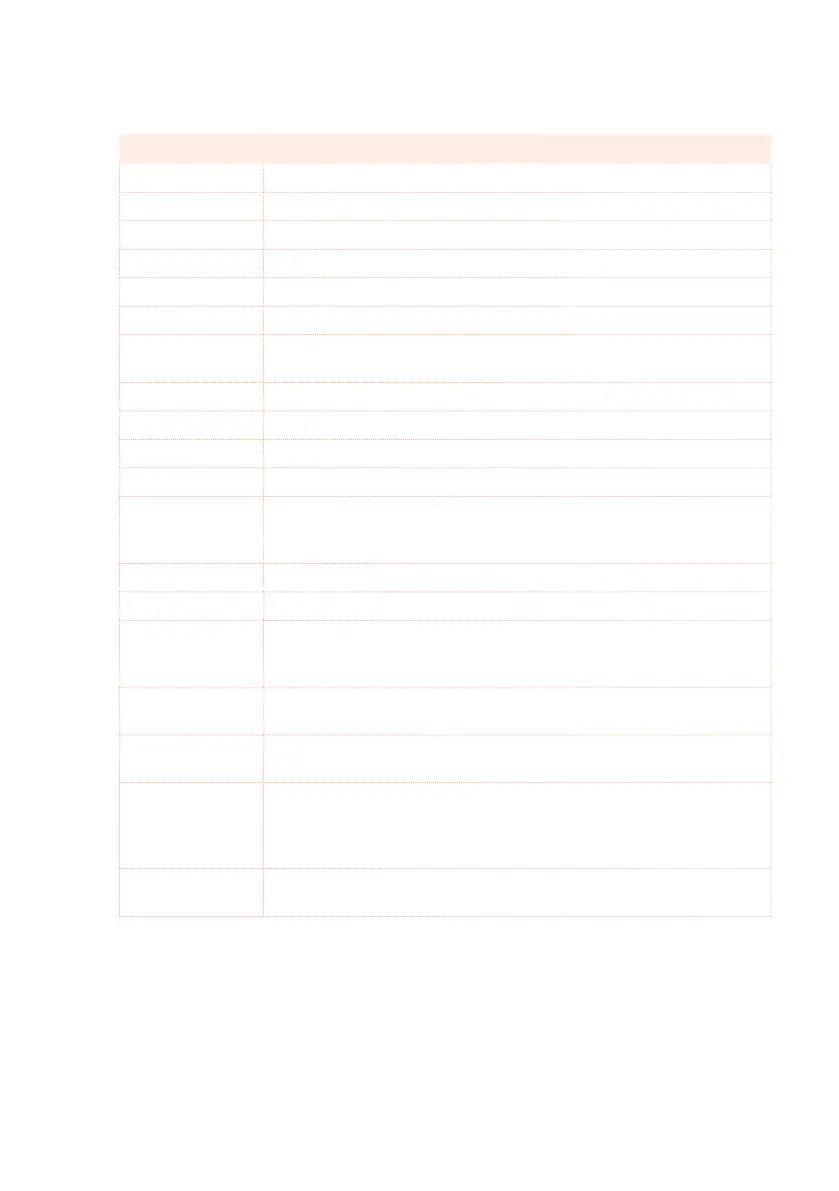Using the Ensemble to add harmony |143
2 Use the Type parameter to choose an Ensemble type.
Ensemble type Meaning
Duet Adds a single note to the melody.
Close Adds a closed-position chord to the melody.
Open 1 Adds an open-position chord to the melody.
Open 2 As the above, but with a different chord shape.
Block Block harmonization – very typical of jazz music.
Power Ensemble Adds a fth and an octave to the melody, as heard in hard rock.
Third Up This option adds a third over the melody note (depending on the rec-
ognized chord).
Fourths LO Typical of jazz, this option adds two perfect fourths under the melody.
Fourths UP As the above, but with notes added over the melody.
Fifths This adds two fths below the original note.
Octave Adds an octave to the melody.
Dual This option adds to the melody line a second note, at a xed interval
set with the “Note” parameter. When selecting this option, a transposi-
tion value appears (-24...+24 semitones to the original note).
Brass Typical Brass section harmonization.
Reed Typical Reed section harmonization.
Trill When two notes are played on the keyboard, this option trills them. If
three or more notes are played, only the last two are trilled. You can
set the trill speed by using the Tempo parameter (see below).
Repeat The played note is repeated in sync with the Tempo parameter (see
below). When playing a chord, only the last note is repeated.
Echo As the Repeat option, but with the repeated notes fading away after
the time set with the Feedback parameter (see below).
AutoSplit1 If more than a single Upper track is in play, the Upper 1 track plays the
melody in mono, while the other Upper tracks play the chord notes.
If only the Upper 1 track is in play, it plays poly- phonically all the
chord notes.
AutoSplit2 Similar to AutoSplit1, but the Upper 1 track always plays the upper-
most note.

